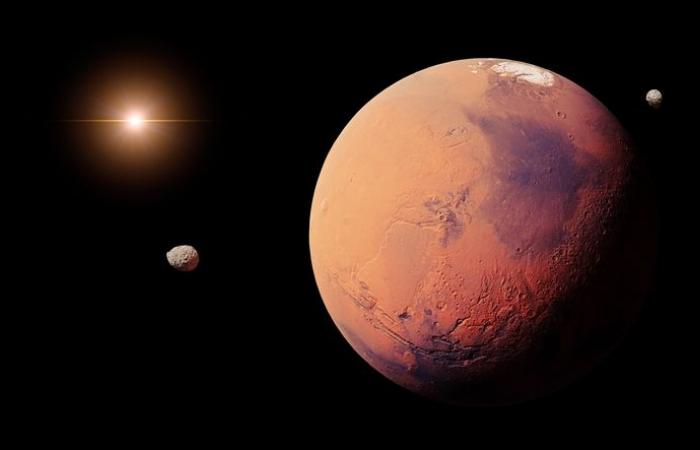Eleven million years ago, an asteroid hit Mars, throwing pieces of the red planet into space. One of these fragments eventually landed on Earth, near Purdue University in the United States. This piece, known as the Lafayette meteorite, was only rediscovered in 1931. Since then, numerous analyzes have been carried out, but this meteorite remains the bearer of many mysteries. Indeed, recent research has revealed traces of liquid water having interacted with Martian minerals more than 700 million years ago. This discovery opens a new perspective on the history of Mars and the conditions that prevailed there in the distant past.
The Lafayette meteorite: a direct link with Mars
The Lafayette meteoritefound in a drawer at Purdue University in 1931, without knowing exactly how it got there, is one of the rare Martian meteorites to have been found on Earth. Over the past decades, it has naturally been the subject of numerous analyses. And for good reason, these meteorites are often referred to as “time capsules” of the universe, because they contain crucial information on the history of planets and celestial bodies.
Its Martian origin has been confirmed by scientists thanks to specific analyses.
In detail, when a meteorite enters Earth’s atmosphere, it undergoes a process called fusion, creating a crust that can help scientists determine its origin. Meteorites also contain minerals and chemical elements that allow us to trace their past, and by extension, that of the planets from which they come. That of Lafayette is no exception to this rule. We know in particular that it was projected into space during an impact that occurred there 11 million years before crossing the solar system and crashing on Earth.
More recently, thanks to advances in scientific instrumentation, researchers have been able to deepen their understanding of this Martian rock. Cutting-edge techniques, such as mass spectrometry and isotopic analysis, have made it possible to examine the minerals that make up the meteorite with unprecedented precision.
Interaction with water: a major discovery
One of the most fascinating aspects of the Lafayette meteorite is the discovery that its minerals have interacted with liquid waterwhich suggests that there was water on the surface of Mars in the distant past. Researchers, including Purdue University professor Marissa Tremblay, have dated these minerals and found that they formed about 742 million years.
Note, however, that at that time liquid water was probably not present in abundance on the surface of Mars. According to scientists, it probably came from the melting permafrostan underground ice released by volcanic and magmatic activity on Mars, a phenomenon which still happens today.
The study of Martian meteorites presents major challenges, particularly when it comes to determining the exact age of interactions between minerals and water. For this work, scientists had to overcome several obstacles to achieve precise dating of these events. For example, they had to ensure that the results were not influenced by processes the meteorite underwent after arriving on Earth, such as heat generated by entry into the atmosphere or subsequent impacts.
The Lafayette meteorite is thus much more than a simple fragment of Mars that fell to Earth. It is a true window on the history of the Red Planet and on the mysteries of liquid water in the solar system. Through this study, scientists were able to trace the evolution of Mars and deepen our understanding of the conditions that may have existed on this planet.






